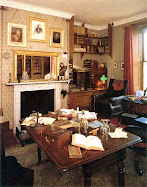Bios,
After our discussion after the mock test I thought that I would post the hastily written notes from the board with a few additions. So here is a description of selected (meaning not all) Phyla and Classes of Kingdom Animalia.
Kingdom Animalia: Animals are multicellular eukaryotes that obtain their food by ingestion.
Phylum Porifera (the sponges): No symmetry, no true tissues, filter feeders, and sessile. Mostly marine freshwater. The simplest form of animal life.
Phylum Cnidaria: Radial symmetry, tissues, mouth, simple gut, and nerve net. Free-living form is the medusa and sessile form the medusa.
Class Scyphozoa – Marine free-living, jelly fish.
Class Anthozoa – Marine sessile, sea anemone and corals.
Phylum Platyhelminthes: Ribbon-like soft bodied animals with bilateral symmetry, simple organs, central nervous system, cephalization, free-living and parasitic. Examples - flatworms, tapeworms, and flukes.
Phylum Annelida: Soft segmented bodies with bilateral symmetry, cephalization, closed circulatory system, free-living, marine, freshwater, and soil. Some parasitic. Examples - earthworms and leeches.
Phylum Mollusca: Soft bodies with bilateral or asymmetry, muscular foot and most have a shell. Most are marine but many live in freshwater and on land. Examples – snails, slugs, clams, oysters, squid, and octopus.
Class Polyplacophora (many/plate/bearer) – bilateral symmetry, eight shell plates, marine, foot for locomotion. Example - chiton
Class Gastropoda (stomach/foot) – asymmetric body with spiral shell tough the shell may be absent, foot for locomotion. Examples – snails, slugs.
Class Cephalopoda (head/foot) – marine, foot modified into tentacles, big eyes. Examples – squid and octopus.
Class Bivalvia (two/shells)– marine and freshwater, two shells, filter feeder. Example - clams, oysters, mussels
Phylum Arthropoda: Two out of three organisms on Earth are arthropods and they are found in every ecosystem! Jointed appendages, exoskeleton, segmented body, compound eye (in most), and many other well developed sensory organs.
Class Arachnida – simple eyes (8), no antennae, two body segments (head and cephalothorax), eight legs. Examples – spiders, ticks, scorpions, and mites.
Class Crustacea – compound eyes, two pair of antennae, multiple body segments, multiple legs, mostly marine. Examples – lobsters, crabs, shrimp, copepods, barnacles.
Class Diplopoda – multiple segments each with two pair of legs, herbivore. Example – millipedes.
Class Chilopoda - multiple segments each with one pair of legs, carnivore. Example – centipedes.
Class Insecta – compound eyes, three segments (head, thorax, abdomen), usually with two pair of wings, six legs, terrestrial, complete and incomplete metamorphosis. Examples – flies, bees, dragonflies, wasps.
Phylum Echinodermata: Radial symmetry, sessile or sedentary, endoskeleton, marine. Examples – starfish, sea urchins, sea cucumbers, sand dollars.
Phylum Chordata: Identified by these structures present during embryo stage - notocord, dorsal nerve cord, gill slits.
Subphylum Vertebrata: Animals with backbones.
Class Agnatha – jawless, skeleton of cartilage, notochord, marine and freshwater. Example – lamprey.
Class Chondrichthyes – Marine, skeleton of cartilage, jaws, paired fins, streamlined bodies, internal fertilization, oviparous and ovoviviparous, cloaca. Examples – sharks, rays.
Class Osteichthyes – Freshwater and marine, skeleton of bone, jaws, paired fins, operculum, swim bladder, great majority have external fertilization, oviparous, cloaca. Examples – trout, tuna, goldfish, koi.
Class Amphibia – four legs, scaleless skin, terrestrial (but needs water to reproduce), ectotherm (cold blooded), oviparous, jelly-like egg, cloaca, lungs, metamorphosis. Examples – salamanders, frogs, newts, toads.
Class Reptilia – four legs, scaly skin, primarily terrestrial, ectotherm, lays eggs on land, leathery shelled egg, oviparous cloaca. Examples – lizards, snakes, turtles, crocodiles.
Class Aves – Feathers, forelimbs modified into wings, acute vision, endothermic (warm blooded), internal fertilization, hard shelled eggs, cloaca. Examples – robin, penguin, bald eagle.
Class Mammalia – Hair, endothermic (warm blooded), mammary glands, internal fertilization, most viviparous (some oviparous), large brain, differentiated teeth. Examples – human, bear, kangaroo, platypus, shrew, blue whale.
Have fun with this. It could help on a few questions. Be sure to write, I will be monitoring the blog.
Mr. Baker
Wind Uncertainty
-
T*he confidence in weather forecasts is not always the same.*
Sometimes all the models lock onto a forecast, suggesting uncertainty is
low and meteorolog...
22 hours ago




No comments:
Post a Comment